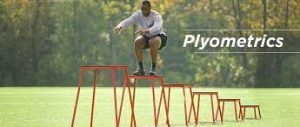The importance of Plyometrics in any workout
What is a disc?
January 13, 2019Injury-Free Skiing in 2019
January 27, 2019The importance of Plyometrics in any workout program
At this day and age, most of us already know about the benefits of bodyweight exercises, or at least should know. Workouts without any equipment can still help us build strength, burn calories and improve athletic performance as well as speed and power like running for instance or even push-ups. If you add a jumping element to your workout, you’re then performing plyometric training, taking your workout routine to a whole new level.
 Plyometric training has been used as part of strength and conditioning programs since the 1960’s. And more recently, extensive scientific research has shown that it is one of the most effective approaches for injury prevention and advanced rehabilitation phases in sports and high-performance activities.
Plyometric training has been used as part of strength and conditioning programs since the 1960’s. And more recently, extensive scientific research has shown that it is one of the most effective approaches for injury prevention and advanced rehabilitation phases in sports and high-performance activities.
What is Plyometric exactly?
Plyometric training is a form of exercise that involves explosive compound movements such as jumping or throwing, where the goal is for the muscles to produce maximal force in the shortest possible time. With using plyometric training regularly, muscle fibers can store more elastic energy that can be transferred more rapidly and powerfully allowing us to jump higher, run faster and throw further.
Before starting jumping all around, bear in mind that plyometric training is not intended for workout newbies nor for those suffering from or still recovering from injuries. Plyometric drills should focus on good form, good technique and an all-out effort. Hence why it’s best done at the beginning of the workout before the muscles start to fatigue.
Types of plyometrics for lower body:
- Standing jumps
- Multiple hops and jumps (one direction or multi-direction)
- Squat thrusters
- Reverse lunge with knee-up
- Alternating lunge jumps
- Box drills (jumping inside an imaginary box of 4 blocks)
- Frog squat jump
- Long forward jump
Types of plyometrics for upper body:
- Plyo push-up (jumping/clapping push ups)
- Depth push-ups
- Plyo pull-ups
- Ball throws (overhead forward throw, half-kneel high toss)
- Catches
If you’re about to start plyo drills for the first time, just focus on 3 to 4 moves at the beginning of your workout (obviously after you’re warmed up well to avoid injuries or cramps), perform 5 reps for 2-3 sets. Just add this to your workouts 2-4 times per week and you’ll reap some benefits as research has shown that plyometric training twice a week effectively produces power and strength gains. 
Not only it’s been proven effective for improving athleticism in general, but also Plyometric training has shown to be an excellent tool to rehab athletes to pre-injury level as it resolves neuromuscular impairment post injuries by preparing the body for rapid movements and high forces that may be imposed during sports participation. But this must be done only at end-stages of rehabilitation, once the athlete as achieved almost full strength, speed and balance.
Nermine F.



